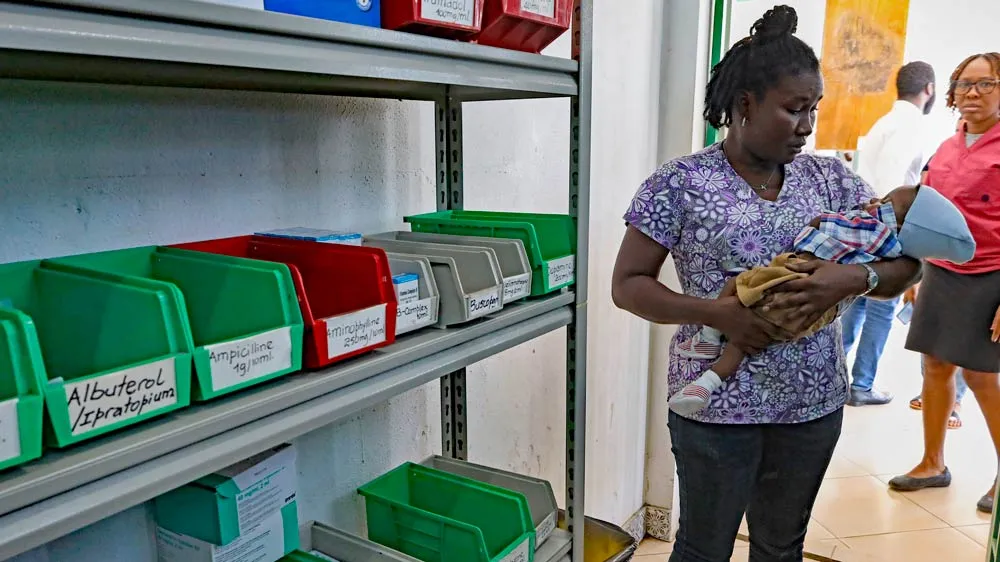March 8, 2016
New Microbicide Gel Could Protect Against HIV, HPV and Herpes
EDGE READ TIME: 4 MIN.
Population Council researchers presented results from the first in human trial of a new and promising microbicide gel, PC-1005, at the Conference on Retroviruses and Opportunistic Infections (CROI) and at the 6th International Workshop on HIV and Women in Boston, MA.
PC-1005 gel, which is also known as MZC, was designed to be used both vaginally and rectally to protect women and men against HIV, herpes simplex virus (HSV), and human papillomavirus (HPV).�PC-1005 contains the highly potent antiretroviral MIV-150, along with zinc acetate dihydrate and carrageenan.
"PC-1005 is the only product designed for vaginal and rectal use targeting HIV, HSV, and HPV to have undergone a Phase I study to date," said Population Council researcher Barbara Friedland.�"We are greatly encouraged by the results of this first vaginal study, which support further study of this important new prevention tool."
Results from the Phase 1 trial of PC-1005 presented at CROI include:
CROI abstract 875: "A first-in-human trial of PC-1005 (MIV-150 and zinc acetate in a carrageenan gel)"
Population Council researcher Barbara Friedland presented results from this Phase I study of PC-1005, conducted in collaboration with colleagues at the University of Alabama, Birmingham.� Twenty-five healthy, sexually abstinent women aged 19-44 used 4mL of either PC-1005 or placebo gel.�In the study, PC-1005 gel was well tolerated when used vaginally once daily for up to 14 days, with low systemic absorption of MIV-150.�Rates of adverse events, most of which were mild and/or unrelated, were similar in both the PC-1005 and placebo gel groups.� Cervicovaginal lavages (CVLs) from women dosed with PC-1005 had antiviral activity against HIV and HPV.� Acceptability of the gel was high, with 94% of participants reporting willingness to use it in the future. �
CROI abstract 876: "CVLs from women vaginally administered PC-1005 inhibit HIV-1 and HSV-2 in the mucosa"
Data presented by Population Council researcher Guillermo Villegas showed that MIV-150 and carrageenan in CVLs following vaginal administration of PC-1005 gel inhibited HIV and HSV-2 infection in explants in a dose-dependent manner. The authors concluded that the potent anti-HIV and anti-HSV-2 activity of PC-1005 in mucosal target cells supports the further development of PC-1005 as a broad-spectrum on-demand microbicide.
Additional data on the use and acceptability of PC-1005 gel were also presented at the 6th International Workshop on HIV and Women in Boston, MA:
Abstract O_03: "Comparison of adherence measures in a Phase 1 clinical trial of PC-1005 vaginal gel"
Population Council researcher Barbara Friedland presented a comparison of four adherence measures that were utilized in the Phase 1 trial of PC-1005 gel: self-report, counts of returned applicators, Dye Stain Assay (DSA) and measuring active pharmaceutical ingredients (APIs) in plasma.�The DSA was evaluated for use on HTI applicators modified to include a groove.
Both API detection and the DSA indicated lower adherence than were indicated by self-report and applicator counts.�While API detection is often considered to be the gold standard in adherence measurement, it can only be used in the active study arm and can only provide a snapshot of trial adherence.� The DSA provided a cost effective and comprehensive picture of adherence to both PC-1005 and placebo gels.�The authors recommend evaluating the DSA for use on applicators inserted rectally and implementing the DSA in future vaginal and rectal gel trials.
Abstract P_39: "Acceptability of PC-1005 vaginal microbicide gel: a mixed-method study and conceptual framework from a Phase 1 trial"
Population Council researcher Barbara Friedland also presented acceptability results from the Phase 1 trial. The authors adapted a conceptual framework for microbicide acceptability, describing the individual factors, trial contextual factors, and product characteristics that are relevant in a Phase I trial.�Quantitative and qualitative findings suggested that women found PC-1005 gel to be highly acceptable overall.�Most felt it was easy to apply, and appreciated that the gel had no color or scent. Some women mentioned gel leakage, leading study authors to recommend that future studies reduce the volume of PC-1005 gel used.
"The Population Council is committed to developing safe, effective, and acceptable HIV and STI prevention products," noted Tom Zydowsky, Population Council director of biomedical research and pharmaceutical development, HIV and AIDS program. "This first in-human study of PC-1005 builds on extensive and highly promising pre-clinical evaluations of the formulation, and confirms that PC-1005 gel has the potential to prevent the acquisition of STIs that threaten the sexual and reproductive health of men and women worldwide."
The Population Council confronts critical health and development issues-from stopping the spread of HIV to improving reproductive health and ensuring that young people lead full and productive lives. Through biomedical, social science, and public health research in 50 countries, we work with our partners to deliver solutions that lead to more effective policies, programs, and technologies that improve lives around the world. Established in 1952 and headquartered in New York, the Council is a nongovernmental, nonprofit organization governed by an international board of trustees.


